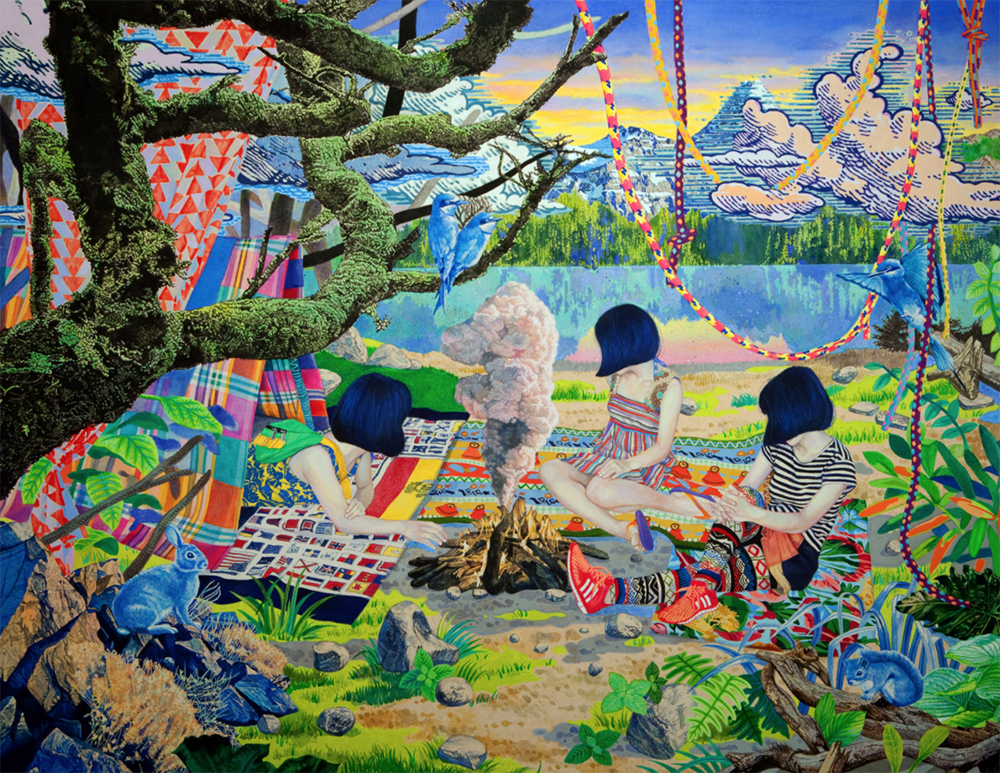SENI
Naomi Okubo

Words by Addison Anthony
Her artworks appear like carefully cut-out collages, with drastically differently stylized elements scattered atop one another across the canvas. In reality, the paintings are fully hand-painted by the artist but have their roots in mixed media. Naomi Okubo works through her artistic process by gathering images she likes from different media sources, like fashion magazines and interior design books, scanning them into Photoshop, and tracing their outline from a projection. She then hand-paints the overlapping elements. This mixture of techniques gives her work an especially two-toned appeal.
Okubo’s work has several threads of continuity that hold true throughout her repertoire. She is fond of adding as many overlapping patterns as possible, often through portrayals of detailed carpets, wallpapers, and textiles, which serve to create a kaleidoscopic atmosphere. She uses an abundance of floral patterns to create an overt sense of femininity. The figures in her paintings always hide their faces, either with a magazine or some other object or simply by facing away from the viewer. These shy and hidden figures, with their black bobs of hair, are modeled after the artist herself and serve to inspect the artist’s own feelings about personal appearance.
“When people develop their identity, they use their appearance, and they use images from various media. They’re usually idealistic images. . . If I paint the faces, people can recognize if they’re happy or crying – but if I don’t paint the faces, then people can think about the painting more,” says Okubo.
Okubo connects many of her ideas about social representations to Japanese culture specifically. In Japan, as in other less-individualistic societies, getting along smoothly with someone else is more important than showing off yourself, according to Okubo. These societal expectations create a culture of conformity and make it difficult for people who do not fall into the right categories. Okubo links these societal conditions to her experiences with bullying as a child, which were the first moments when she began to think about appearance’s effects on the treatment of the individual.
“In Tokyo… and in other developed nations, mass media provides us not only with images of created physical appearances but also images of lifestyles and ways of spending our time that happen to be artificial constructs. We admire these images and adopt them but we are overly exposed and consume these images a bit too much. We become confused about what is real and what is contrived. The consequence is that we become addicted to them.”
Naomi Okubo is originally from Tokyo where she graduated from Musashino Art University but currently, she lives in Brooklyn working on an artist’s fellowship granted by the Japanese Agency for Cultural Affairs.





